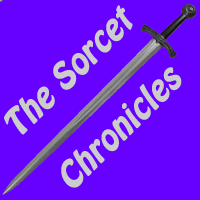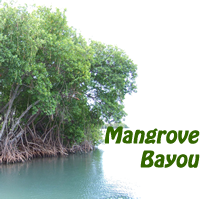Another
form of arthritis that may begin in childhood is osteoarthritis, and
researchers today are working on detecting biological "markers" to
permit them to estimate the extent and severity of the illness even
before the patient shows clinical signs.
Limb-lengthening holds hope for disorders involving abnormal arms and legs today.
The Ilizarov technique involves cutting the bone surgically and then, using an
external brace, pulling the ends apart at the same rate that they heal toward
one another. Studies underway now on bone mechanics may enhance
this technique.
"The
Ilizarov technique has become well-known in North America in the last
ten years, says Dr. Morris Duhaime, MD, chief of staff at the Shriners
Hospitals for Crippled Children's Canadian Unit in Montreal and president
of the Pediatric Orthopaedic Society of North America. "That will
become more sophisticated and will be used more, probably for specific
cases of small people. We've got to be careful of what we say here be
cause we don't want to encourage the small people and then not come through
with it, but with time, that technique is going to have its specific
indications."
Electrical stimulation may increase the rate of formation of new bone at the
site of a break, as might ultrasonic treatment. Both these techniques claim to
minutely vibrate the healing bone, in effect using microstresses to stimulate
faster growth. Both also require repeated, perhaps daily, visits to the clinic
and so are at best an inconvenience. Whether these techniques work for everyone
is a matter of debate; one manufacturer of an ultrasound machine claims a 40%-faster
healing rate. Others are skeptical; A study published in <cite>Clinical
Biomechanics</cite> concluded, "...our results suggest that shock-waves
have no beneficial effect in acute fracture repair."
"There is something there," says Dr. Duhaime of the ultrasound claims. "But
I think the results are not what we had expected."
Duhaime does expect improvements in other disorders of the bone: "I think
that what's going to happen in the next five to seven years will be a lot of
treatment of metabolic bone disease, using medications. There will probably be
a big breakthrough in certain diseases such as osteogenesis imperfecta (abnormal
fragility of the bones) and fibrous dysplasia (a form of cystic bone lesion)," Duhaime
says. "And we can expect certain breakthroughs in neural orthopaedics--genetics
and neuro-orthopaedics in diseases such as muscular dystrophy and Friedreich's ataxia."
"There has also been a lot of talk about molecular biology, more pertaining
to the spine, the discs, and disc diseases and scoliosis," Dr. Duhaime adds.
There will probably be a breakthrough in treatment and prevention of scoliosis
in children, probably based upon discoveries of what happens to the different
ligaments and tendons and discs involved when you have a spinal deformity."
Duhaime sees possibilities in use of growth hormones too. "I think we will
not use electrical stimulation," he says. "We'll probably use growth
hormones to augment bone formation. There again, we have to be careful, or small
people will think that they can be made taller. It's not that at all."
Advances in molecular biology lead naturally to advanced work on metabolic bone
diseases. Familial hypophosphatemia is
the most prevalent inherited form of rickets, and the various Shriner hospitals
have worked out a treatment
based upon vitamin-D and large phosphate supplements, according to Elwood W.
Speckmann, Ph.D., director of research programs for the Shriners Hospitals for
Crippled Children.
The best answer to hereditary diseases may lie in advances in genetic research,
but Dr. J. Richard Bowen, MD, department chair of the Department of Orthopaedics
at the Alfred I. duPont Hospital in Wilmington thinks that may take some time:
"Understanding the genetic aspects of inheritable diseases, that's been
an exciting area to watch evolve, and it's been evolving radically. However,
we have not seen an evolution to enable us to alter and treat diseases very well.
"We've isolated hundreds of defects in genes and can say, 'this disease
is caused by this defect in a gene at this precise place.'" Bowen says. "But
we have just a very few examples where we can take this information and go back
to the patient and have a technique that will alter the gene and make it better."
An example may be Marfan syndrome, a potentially fatal inherited disorder that
can cause, among other problems, severe skeletal deformities, notably extraordinary
length of the arm and leg bones. Some researchers now believe this is linked
to a defect in the gene for making fibrillin, a component of connective tissue
that holds together skin, muscles and organs. The same genetic disorder may be
involved in another common childhood disorder, idiopathic scoliosis. Today, Marfan
syndrome—which some medical historians believe accounted for Abraham Lincoln's
tall, gaunt frame—can be detected as early as the unborn fetus. But detecting
it and doing anything about it are two very different things.
"We have only minimally entered the aspect of altering the genes for treatment," Dr.
Bowen says. "I was hopeful that this would occur very quickly, but I think
it's going to be a long process. There is a lot of very difficult basic science
research to be done before we see great strides in this. I look for the discovery
phase, to find these defects, to come very quickly. But it's been a little frustrating,
as a clinician, a practicing physician, to wait for something we can use to solve
these diseases."
The Holy Grail of genetic research is the ability to alter the genes within existing
cells, treating the young person or adult to permanently correct hereditary problems.
This involves isolating the problem gene, creating some corrective RNA—the blueprint
the gene passes on to the cell as it reproduces—and then getting the replacement
RNA into the cell, probably using some specially tailored virus.
"Changing genes in human beings? Who knows how long that could take," says
Dr. Bowen. "It would be exciting, but it is probably going to be a long,
slow, hard, tedious process to work out. There has been some work with cystic
fibrosis by which the gene was being introduced by a virus. Very preliminary
work in that area.
"An alternative we may see," Bowen adds, "are metabolic pathways,
outlined very clearly. And then we can use other substances to substitute or
to alter the metabolic pathway and therefore counteract some of the negative
actions of the defective genes, but it's a long way off."
Other advances involved better surgical equipment and use of computers linked
to CAT (computerized axial tomography) and MRI (magnetic resonance imaging) scanners
to permit extremely accurate small-scale surgeries.
"As we go along in the next 5-7 years, there will be more stress put on
segmental instrumentation in the correction of deformities of the spine," says
Dr. Duhaime. "That means there is a lot of research going to be done in
different biomaterials that are used in these instrumentations."
Dr. Bowen is excited about virtual reality in the operating room, in permitting
more precise surgery:
"In spine surgery now we have some equipment just barely becoming available
now, permitting us to do CAT scans or MRI and create a 3-dimensional image of
the bones and the muscles and the nerves.
"Then we can have the computer help us guide the placement of an orthopaedic
device in the patient. If you look at a person you can see the skin and the layer
of fat right down to where you're working—but you can't see through the bone
to what's on the other side. With computer models we will be able to see through
the bone and the structure to
the other side. It's almost like virtual reality of looking through the tissues.
So I'll be able, by using the computer image, to know where the nerves and vessels
are on the other side that I can't even see."
Common orthopaedic problems involve the major joints, the shoulder, elbow, hip
and knee. Here too, very specialized instruments are advancing research and bringing,
we hope, eventual treatment. For example, researchers continue to investigate
injuries to the knee and to the three ligaments most commonly involved, the posterior
cruciate ligament (PCL), anterior cruciate ligament (ACL) and median collateral
ligament. Using sensors to measure strain on the ligaments and the results in
terms of knee flexion, they are attempting to establish a database against which
clinicians in the future can compare their patients.
Baseline data collection and computer databases may prove an invaluable tool
too. Dr. Bowen stresses that one of the most important medical breakthroughs
may be use of the computer and interconnections such as the World Wide Web. First,
patients or their parents will now have instant access to much more information about any disorder or disease.
And for the clinician, Web connections mean that databases can be constructed
from the thousands upon thousands of individual case reports across the nation
and around the world. Physicians used to work in splendid solitude, occasionally
reading up on the latest studies but otherwise not in touch with other practicing
physicians on a day-to-day basis. Now, not only is research material more available,
but the vast mass of individual cases can be transmitted to a central location,
and for the first time statistical data derived from the entire population. This
gives the doctor a better understanding of not only what is normal as opposed
to what is in need of treatment, but permits better prediction
of the outcome of any given treatment.
"We've never had the ability to understand the effects of medicine on the
whole process of human life before," Bowen says. "But now I think we'll
see this come about."
-end article-
LINKS:
MATERIALS USED WITHIN THE BODY.
Traditionally, materials like stainless steel were used on the theory that they
were relatively inert and did not seem to cause excessive inflammation. But more
sophisticated tests can now address questions such as whether or not the material
used--and we use many more materials now--can leach out toxic byproducts or otherwise
change in chemical makeup through interaction with the body's fluids.
One of the best materials to use in replacing bone is more bone from the same
patient, and a new technique for grafting bone and associated blood vessels from
elsewhere in the leg to the hip joint can correct avascular necrosis of the upper
part of the femur--the "ball" in the hip joint socket.
BONE MECHANICS
Recent studies on cattle bones show that bone breaks are much more complex than
previously thought and vary with compression, tension, and axial rotation, any
or all of which may occur during a break. Further, trabecular bone--the porus,
more flexible material that represents a high percentage of bone in younger people,
may be more tolerant to the Ilizarov technique than the denser corticoid bone
that increases in mass as we grow older.
FRIEDREICH'S ATAXIA
Friedreich's ataxia is one of a family of hereditary degenerative nervous disorders.
It shows a skeletal involvement in scoliosis and hammertoe. Dr. Duhaime says
that any breakthrough will probably involve discovery of a missing protein in
victims--and thus discovery of the cause will also mean discovery of a treatment.
TREATMENT BASED UPON VITAMIN-D AND LARGE PHOSPHATE SUPPLEMENTS According to Shriners
Hospitals' Elwood W. Speckmann, Ph.D. "If started early enough (research
has) shown that lower limb deformities will correct without need for orthopaedic
procedures. I view this as quite a breakthrough, and it's now being used around
the world. But we still need research into why this metabolic defect occurs."
Shriners Hospitals investigators have also confirmed that familial hypophosphatemia
is linked to the X-chromosome and that girls respond better to treatment than
do boys.
INFORMATION ABOUT ANY DISORDER OR DISEASE
"The new generation of children I deal with are very much in tune to computers,
and this is going to be one of their main ways of communication," Says Dr.
Bowen. "The Internet is education. Right now the Web has been a place for
advertising and play, but we're going to get away from that and move into a real
educational mode for young adults, children.
"We're working to put the complete texts of pediatric orthopaedics into
your Web page to be available to parents and other orthopaedists too. We want
the patient to come to us or to any orthopaedist around the country and go home
and use their computer and interact and learn more. The more a patient knows
about the condition, that mental enlightenment helps us to achieve the goals,
get the results we want. I much prefer to deal with a patient who is very sophisticated
and educated about their problem. They make better judgements as patients."
PREDICTION OF THE OUTCOME
"There is going to be a nationwide evolution of outcome studies," Dr.
Bowen says. "As it stands now we are able to do an operation and evaluate
it for a few years, 3,4,5, years. But we have not been able to evaluate it on
what it means to the person's life as a whole. And we've not been able to compare
thousands of cases, or hundreds of hospitals, throughout the country, and create
a nationwide basis of understanding of what the orthopaedic care offers to the
individual, both positive and negative.
"We'll be able to compare particular operations and how they affect life.
What will it mean to the person' life, the quality of their work, their perspective
of how they view themselves as a human being? The perspective of how other people
perceive them. This is going to occur in the next 5-6 years and it will enlighten
us immensely into how medicine, and particularly children's orthopaedics, is
affecting the entire society."
— end — |



